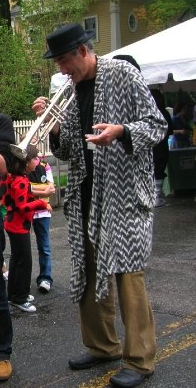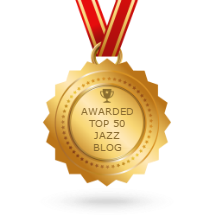The whole world-why restrict it-the entire universe-knows
that the Beatles have released a song called Now And Then. This
Frankenstinian effort was, as the YouTube P.R. says: “brought to life and
worked on anew with contributions from all four Beatles.” The reconstruction
entailed using AI to extract an old John Lennon vocal track and adding new
musical backup.
Now And Then is probably the highest profile use of AI in popular music. It shows
us that this technology can do something that couldn’t be done before: separate
sounds that had already been mixed together. A machine-learning algorithm is trained to learn sonic patterns and create a neural network capable of isolating
individual voices or instruments. It can then re-synthesize them to try and
match samples of those instruments or voices. It took Lennon’s voice off the
demo cassette tape and recreated it, giving us a sampled version of Lennon’s voice
(and Harrison’s guitar).
My own view is that the song is maudlin and turgid; glib
romantic tripe surrounded by white-bread music. Disclosure: I feel the same way
about Let It Be, a McCartney song knee-deep in pseudo-religious semi-anthemic
bathos. Worst of all, I never “got” Imagine.
Now to something slightly more objective: the music industry is desperate. People don’t want to pay for music and for 15 years, album sales and music sales have declined. MRC Data, a music-analytics firm says that old songs represent 70 percent of the U.S. music sales.
Record companies are plumbing their catalogues for music that can save their plunging bottom lines. But the real force in music is not record companies which are, in any case, a very small piece of very large international corporations. They are technology companies: Amazon, Google, Apple and Spotify, who own the download market. How many of these companies are out there looking for and signing new musical artists? None. It's no surprise that the music industry will use any tool it can to maximize its resources, especially if this tool simultaneously minimizes expenses.
I’ve read through a number of websites from in and outside the
music industry. They acknowledge the drawbacks of AI (in a word: it’s not
human), but overwhelmingly embrace the use of the technology. Here are some
extracts to give a sense of what I mean.
As one website puts it: “AI can help
with tasks such as music recommendation, content curation, and even music
composition. By leveraging AI as a tool, the music industry can be at the
forefront of the next wave of innovation.”
Another site says: “One of the most significant benefits of AI in music production is the
ability to quickly generate new ideas and variations.”
A trope widely used is this: “It has democratized music production, making it accessible to those
who may not have traditional musical training or expensive equipment.”
Another website states this “Con”: Because many people
see music as such an innately human expression, it is often considered as too
precious to impart onto technology. The thought of a computer generating a
‘random’ piece of music that hasn’t been painstakingly created by an artist is
almost seen as sacrilegious.” However, a few paragraphs later, we read this:
“Instead of shying away from
the idea of this Black Mirror-esque future, the best approach to take is one of
optimism and curiosity. While there are always bound to be diehard old school
musicians who refuse to use tech, as there are readers who still refuse the
Kindle, music producers should consider AI as something to be embraced.”
Another acknowledges this issue: “Moreover, while AI can generate music based on
patterns and trends, it lacks the ability to understand cultural context and
emotional nuance. Music is not just about melody and rhythm; it’s a form of
expression that reflects the human experience. AI, as advanced as it may be,
cannot replicate this aspect of music creation.”
It seems as though consumers of music are being asked to
choose between an archaic “humanistic” attitude that rejects AI, or a “realistic”
one which accepts, even appreciates it and, as the technology gets better and
better, will narrow the gap between human and machine-made creation to indistinguishability.
People will take sides on this and will impute moral and ethical judgements to
buttress their positions.
It would be ridiculous to say the aesthetic application of AI falls
into the life-or-death category of debates surrounding technologies like cloning,
gene splicing or nanotechnology. Some of the debate is morally murkier, but some applications are obviously abhorrent. For example, as used in the streaming cesspool,
to avoid having to pay money to flesh and blood musicians.
I love the Beatles. They were a force; born and fostered in an era when a group might make it past a second album that didn’t sell that well. In my youth, “Rubber Soul,” and ”Revolver” competed for turntable time with Miles, Getz and Coltrane. Now, rather than a generative force, they are a symptom of a systemic breakdown. The whole business is reminiscent of the holographic resurrection of dead musicians.
It's only a matter of time before the Beatles get the Rod Stewart and Ella
Fitzgerald treatment, which gives new meaning to the expression “half-dead.” Yes, pairing Rod and Ella is like putting Twinkie creme filling into a Godiva
chocolate; like putting Donald Trump's hair on Sophia Loren's head. It
shouldn't be conceived of. It shouldn't be done. But it has been, and it will.
Can anything be done? Those few musicians with real power might exert that power to force streaming companies to pay a fair share to artists. We might all demand those changes. We might also take note that the enemy is us and pony up for recorded music the same way we shell out for HBO, to see a movie, a show or a dance concert.




.jpg)






